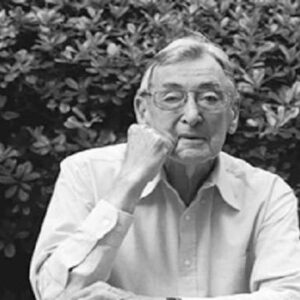Robert F. Furchgott, an American biochemist, was the first to discover that nitric oxide (NO) serves as a signaling molecule in mammals’ circulatory systems. This discovery won him a share of the Nobel Prize in Physiology or Medicine in 1998, as well as a number of other significant medals and honors. He grew up in small towns, the son of a department store owner, where he developed an interest in nature and science. He used to adore going to the beach, marshes, and woodlands as a kid, and he was an avid bird watcher. He had no question in his mind since he was a child that he was destined to be a scientist, and his parents’ support further fueled his desires. He earned his doctorate in biochemistry from Northwestern University after graduating from the University of North Carolina at Chapel Hill with a degree in chemistry. He spent several years teaching and conducting research at Cornell and Washington Universities before joining the SUNY-Brooklyn Department of Pharmacology in 1956, where he remained for more than three decades. During his studies, he was especially interested in the mechanism of drug interaction with blood vessel receptors. He also devised a method for determining how blood arteries respond to drugs, neurotransmitters, and hormones by experimenting with rabbits.
Childhood and Adolescence
Arthur Furchgott and Pena (Sorentrue) Furchgott had Robert Francis Furchgott on June 4, 1916, in Charleston, South Carolina. His father was the owner of a department business.
The little youngster developed an appreciation for nature as he grew up in a small town. On field trips organized by the local museum, he would frequently visit neighboring beaches, marshes, and woods. His family moved from Charleston to Orangeburg in 1929, where he attended high school.
During his high school years, he intended to pursue a career as a scientist. His parents supported him and gifted him with chemistry equipment and a small microscope. In 1933, he graduated from high school.
In 1937, he earned a bachelor’s degree in chemistry from the University of North Carolina at Chapel Hill, and in 1940, he earned a Ph.D. in biochemistry from Northwestern University.
A Career of Robert F. Furchgott
He was offered a postdoctoral position at Cornell University Medical School in New York City in the laboratory of Dr. Ephraim Shorr, an Associate Professor of Medicine at the institute, after obtaining his doctorate.
He worked and researched at Cornell from 1940 until 1949, when he moved to Washington University School of Medicine to take up an assistant professorship in pharmacology. He spent the 1950s researching the energy metabolism and function of rabbit intestinal smooth muscle, which was an exciting time for him.
From the gut, he moved on to the rabbit thoracic aorta, where he created a method for assessing how blood arteries react to drugs, neurotransmitters, and hormones. ‘Reactions of strips of rabbit aorta to epinephrine, isoproterenol, sodium nitrite, and other medicines,’ he published in 1953.
Furchgott became the chairman of the State University of New York (SUNY) College of Medicine in New York City’s new Department of Pharmacology in 1956. There, he worked on photorelaxation of blood vessels, factors influencing heart muscle contractility, peripheral adrenergic processes, and receptor theory and mechanisms, among other things.
He showed in 1980 that blood arteries widen because their linings generate a chemical that tells the smooth muscle cells in the vessels to relax. He identified the relaxing element as nitric oxide after a few years of diligent research (NO). In 1986, he gave a conference at the Mayo Clinic in Rochester to present his findings.
In 1989, he left SUNY as a professor and joined the University of Miami School of Medicine in Florida as an adjunct professor. Even after he retired, he continued his research.
Major Projects of Robert F. Furchgott
He is most known for his work with nitric oxide (NO), which led to the discovery that NO works as a signaling molecule in the mammalian circulatory system, which is considered one of the most important discoveries in cardiovascular medicine ever. His study paved the path for more research, which eventually led to the invention of Viagra, an anti-impotency medicine.
Achievements & Awards
Furchgott received numerous honors, including the Roussel-Uclaf Prize for Signal Transduction Research (1993) and the Wellcome Gold Medal from the British Pharmacological Society (1995).
The Albert Lasker Award for Basic Medical Research was given to Furchgott and Ferid Murad in 1996.
“For their discoveries concerning nitric oxide as a signaling molecule in the cardiovascular system,” Robert F. Furchgott, Louis J. Ignarro, and Ferid Murad shared the Nobel Prize in Physiology or Medicine in 1998.
Personal History and Legacy of Robert F. Furchgott
His first marriage, to Lenore Mandelbaum, took place in 1941, and he had three children with her. After more than four decades of marriage, his wife died in 1983.
Margaret Gallagher Roth was his second wife. They stayed together till she died in 2006.
Robert F. Furchgott died on May 19, 2009, at the age of 92, after a lengthy life.
Estimated Net Worth
According to online sources (Wikipedia, Google Search, Yahoo Search), Robert F Furchgott has a net worth of $ USD 5 million and earns a living as a university professor, biochemist, pharmacologist, chemist, and physician.


